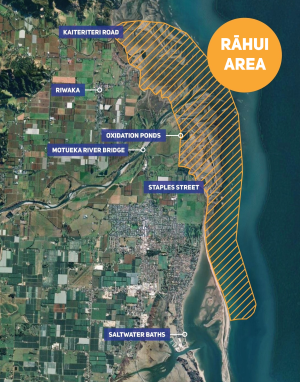Update 23 January
A decision has been made to keep the rāhui in place for the Motueka coastline until further testing can be done on the water and sediment in the area. This approach is to ensure the safety of the community in the waterways.
The rāhui covers the coastline and river mouths from north of the saltwater baths to the Riuwaka river mouth and prevents the gathering of seafood and kai in these areas, as well as swimming and entering the water.
Motueka’s Wastewater Treatment Plant is back to full health.
In late September, Tasman District Council engineers noticed that part of the filtration system at the plant was showing signs of failure and while it was still functioning, it wasn’t working at the most optimum level.
Waters and Wastes Manager Mike Schruer says the problem area was the membranes that remove any remaining bacteria and minute particles before water is discharged. By the time the water gets to these membranes, it is close to being completely treated.
He says as an emergency measure the council had to revert to the system we used prior to 2016 and pump treated water into the adjacent soakage area where it is filtered through the ground.
A rāhui was put in place banning the collection of fish and shellfish from an area along the adjacent coastline and working closely with iwi, Public Health, and the Ministry for Primary Industries we ensured any potential effects were minimised.
Mike Schruer says the good news is that we managed to get hold of brand-new membranes.
“Our neighbours at Marlborough District Council have allowed us to use the new membranes they had ordered as they can wait for the next batch of membranes to be manufactured.”
He says these have now been installed are functioning well and the pumping into the soakage area has ended.
“We carried out regular water quality testing at numerous sites around the plant and are very pleased to see the laboratory results showed no significant rises in bacteria levels following the emergency pumping programme.”
Mike Schruer says the old membranes have been sent away for forensic analysis to try and find out why they deteriorated the way they did but those results are still some months away.


